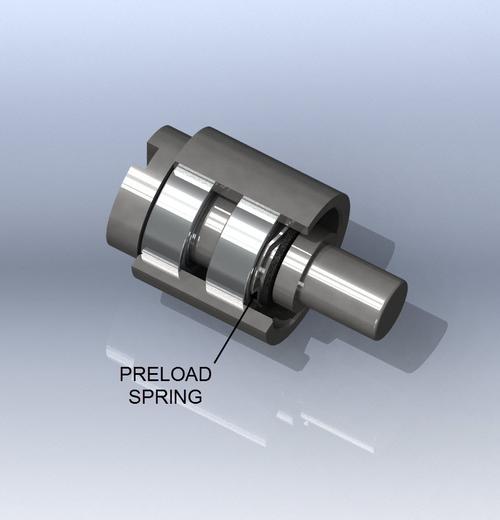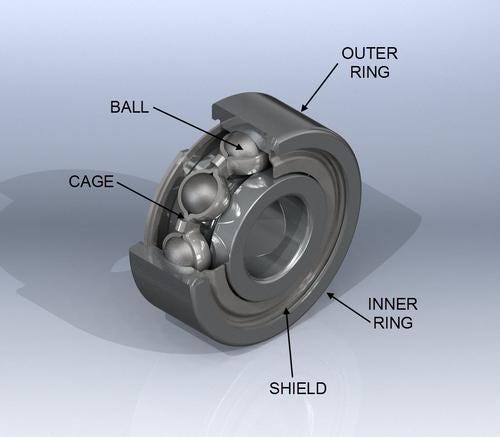June 17, 2013

It is estimated that there are more than 500,000 medical products on the market today. Many of these devices rely on rolling element bearings to achieve required performance levels. Engineers and designers are faced with unique challenges developing these products, and bearings play a key role in both simple and complex devices.
Bearing materials
All bearings should be manufactured using rings produced from high-purity material. For most medical applications, martensitic stainless steel, similar to AISI 440C, is recommended and often required due to regulatory requirements. This material, which can be specified differently depending on its manufacturer, provides for good corrosion resistance and has fine, evenly dispersed carbides, which result in lower noise and vibration levels than 440C. This type of stainless steel is very desirable, particularly in high-speed devices.
Nitrogen-enhanced martensitic stainless steel is also available, and while it is more expensive, it offers up to five times the corrosion resistance when compared to traditional 440C type materials. Other benefits of this material are very low noise levels, extended fatigue life due to its fine structure that contains smaller chromium nitrides (as opposed to chromium carbides), and a high resistance to corrosion resulting from exposure to blood.

In some cases, balls produced from ceramic materials, such as silicon nitride, can prove beneficial. Ceramic balls exhibit high hardness and are lightweight, highly polished, nonmagnetic, and resistant to attack from most liquids and chemicals. Ceramic balls greatly improve the high-speed capability of the bearing. Bearings made of steel rings and ceramic balls are commonly called hybrid bearings. While ceramic balls have an impressive list of beneficial characteristics for bearing applications, they are not a cure-all medicine. Due to the high hardness of the ball, contact stress is increased, so fatigue life is compromised. When the typical failure mode is characterized by fatigue, it's usually best to stick with steel balls.
Retainers, or ball separators, are typically produced from a 300 series stainless steel. In high-speed applications, it is often necessary to use a plastic or phenolic resin snap-in or crown style retainer. For very high speeds, an angular contact bearing with a full-machined retainer is recommended. These types of retainers provide increased stability at higher speeds.
Phenolic resin cages have a porous structure and can be impregnated with oil for additional lubricity. Some of the plastic materials, such as polyamide-imides, contain additives such as graphite and Teflon for additional lubricity in emergency running conditions. A wide array of lightweight plastic materials are available that can handle temperatures up to 500F and are autoclavable.
An autoclave is a device used to sterilize surgical tools, dental drills, or other devices by subjecting them to high-pressure saturated steam for around 20 to 30 minutes depending on the size of the load. This is a common practice that can hurt the bearing materials and lubrication.
Lubrication
Lubricant selection may be the specification most overlooked by designers and engineers. Bearing life depends on proper lubrication in terms of both type and amount. In many cases, miniature and smaller instrument bearings are lubricated once for the lifetime of the device. Thousands of greases and oils are available that are designed to function in a variety of conditions and environments.
Operating temperature is the primary consideration when selecting a lubricant. Temperature directly impacts the base oil's viscosity, which in turn impacts the ability to support loads. In the world of medical devices, bearing lubricants are subjected to sterilization, temperature extremes, high-speed rotation, saline washdown or irrigation, chemicals and reagents, blood, and radiation.
About the Author(s)
You May Also Like





